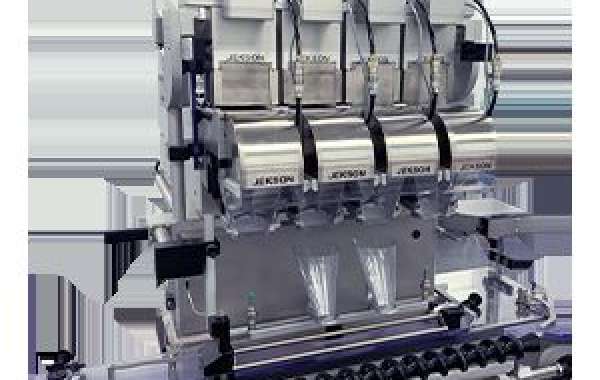In the fast-paced world of pharmaceutical manufacturing, precision and quality control are paramount. The advent of Advanced Tablet Inspection Systems has brought about a revolutionary shift, not only ensuring the integrity of tablet production but also significantly enhancing overall efficiency in the pharmaceutical industry.
The Evolution of Tablet Inspection Systems
Pioneering Quality Assurance
Tablets remain a primary and widely utilized form of pharmaceutical dosage. Ensuring the quality of each tablet is not only a regulatory necessity but also a critical aspect of maintaining consumer trust. The evolution of Tablet Inspection Systems mirrors the industry's commitment to meeting and exceeding quality standards.
Historically, manual inspection was the norm, relying on human operators to identify defects. However, this method was time-consuming and susceptible to human error. The advent of Advanced Tablet Inspection Systems marked a turning point, introducing automation and cutting-edge technologies to streamline the inspection process.
Key Features of Advanced Tablet Inspection Systems:
- High-Speed Inspection:
Modern Tablet Inspection Systems leverage high-speed cameras and advanced image processing algorithms, allowing for rapid and accurate inspection of tablets in real time. This translates to increased production speeds without compromising on quality.
- Multi-Parameter Analysis:
These systems are designed to analyze multiple parameters simultaneously, including size, shape, colour, and surface defects. The ability to assess various attributes in a single inspection cycle enhances the thoroughness and accuracy of the quality control process.
- Defect Detection and Classification:
Advanced systems go beyond simple defect detection; they classify defects into specific categories, providing detailed insights into the nature of the issue. This classification system enables manufacturers to address underlying issues and continually improve production processes.
- Integration with Production Lines:
Industry 4.0 principles emphasize seamless integration and connectivity. Advanced Tablet Inspection Systems seamlessly integrate with production lines, ensuring a continuous and automated inspection process. This integration minimizes downtime and maximizes overall production efficiency.
- Data-Driven Decision-Making:
The data generated by these systems is invaluable for manufacturers. It offers insights into production trends, defect patterns, and overall equipment effectiveness. Armed with this information, manufacturers can make data-driven decisions to optimize processes and enhance product quality.
Benefits of Implementing Tablet Inspection Systems:
- Elevated Product Quality:
The primary objective of Tablet Inspection Systems is to ensure the highest product quality. By detecting and categorizing defects, these systems contribute to an unprecedented level of precision and consistency, ultimately enhancing consumer safety and satisfaction.
- Increased Production Efficiency:
The high-speed and automated nature of Advanced Tablet Inspection Systems translates to increased production efficiency. Manufacturers experience reduced downtime, higher throughput, and lower production costs, creating a more competitive position in the market.
- Regulatory Compliance:
Compliance with regulatory standards is non-negotiable in the pharmaceutical industry. Advanced Tablet Inspection Systems provide a robust mechanism to meet and exceed these standards, reducing the risk of recalls and regulatory penalties.
- Cost Savings:
While the initial investment in these inspection systems may be significant, the long-term benefits far outweigh the costs. Reduced waste, increased efficiency, and minimized errors result in substantial cost savings over time.
Future Trends in Tablet Inspection Systems
The trajectory of innovation in Tablet Inspection Systems is poised for continuous advancement. Emerging technologies such as artificial intelligence, machine learning, and the integration of Internet of Things (IoT) devices hold the potential to further refine and elevate the capabilities of these systems. Manufacturers can expect even greater precision, speed, and adaptability in the near future.
Conclusion
In the realm of pharmaceutical manufacturing, where precision and quality are non-negotiable, Advanced Tablet Inspection Systems stand as a beacon of progress. The journey from manual inspection to high-tech automated systems reflects the industry's commitment to producing pharmaceuticals of the highest standard.
Embracing the revolution brought about by these inspection systems is not just a step forward; it's a leap into the future of pharmaceutical manufacturing. Manufacturers adopting Advanced Tablet Inspection Systems position themselves not only as compliant with industry standards but as leaders in innovation, ensuring the continued delivery of high-quality pharmaceuticals to meet the demands of an ever-evolving market.







